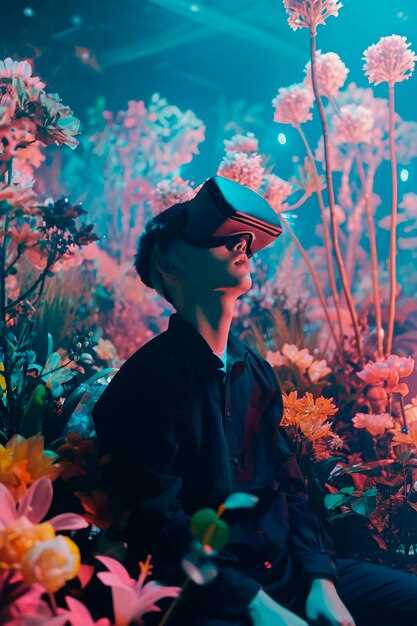In recent years, a remarkable transformation has occurred in the realm of personal expression. Individuals seek new ways to showcase their identities, leading to adventurous experimentation. Immersive environments play a crucial role, offering innovative platforms. Creativity knows no bounds when reality melds with imagination.
Rather than traditional garments, people now embrace avatars dressed in unique creations. This paradigm shift offers a playground filled with possibilities. Environments are not just for gathering; they are stages for self-representation.
Blockchain technology introduces novel concepts of ownership and authenticity. Digital artistry flourishes, bridging gaps between traditional and virtual realms. Artists, designers, and consumers converge in an ecosystem that thrives on collaboration.
As boundaries dissolve, the question arises: how will these developments shape tomorrow?
The Future of Fashion in the Metaverse

Emerging virtual realms are reshaping how individuals perceive style and self-expression. Traditional boundaries fade, allowing limitless creativity and innovation. The integration of technology leads to new experiences for consumers, brands, and designers. Virtual environments offer opportunities that were once unimaginable.
Dress up avatars in unique ensembles, expressing individual identities without material constraints. Every choice becomes an act of creativity, inviting collaboration between artists and audiences. Users engage in immersive experiences, while brands reinvent marketing strategies and consumer interactions.
This evolution sparks excitement and curiosity, challenging our fundamental understanding of value and ownership. People are ready to embrace innovations such as unique digital assets and attire that defies traditional norms. Movement towards sustainable practices also gains momentum as virtual items reduce environmental impact.
With new concepts developing rapidly, designers have the chance to challenge conventional tastes. Audiences no longer seek mere consumption; they crave experiences that resonate with their values. Collaboration and community take center stage, redefining connections in both social and economic contexts.
Investments in virtual apparel signal a shift in how society perceives status and luxury, as digital ownership becomes synonymous with exclusivity. This transformation is not merely about clothing but rather a reimagining of lifestyle in novel spaces. As technology continues to evolve, expect an even bolder convergence of style and innovation.
Digital Clothing and Its Impact

A new era of virtual attire is transforming personal expression. People increasingly find themselves navigating this digital landscape. Innovations are reshaping how individuals perceive style. It’s more than just pixels on a screen; it’s a lifestyle.
Some wear virtual outfits to showcase creativity. Others leverage these technologies for social interaction. Brands are also capitalizing on this phenomenon, exploring uncharted territory.
As these elements converge, traditional views on apparel are challenged. Individuals connect with their online personas like never before. The versatility provided by virtual garments enhances one’s ability to experiment without limits. Access to diverse styles becomes effortless, allowing everyone to express their identity. This means a wider variety of choices in a world free from physical constraints. Boundaries dissolve, leading to a wholly unique experience.
The environmental impact cannot be overlooked, either. Virtual alternatives often present sustainable options compared to conventional production. Reduced waste and lower resource consumption signify an appealing shift towards eco-friendliness. But can this truly offset concerns related to digital consumption?
Moreover, the sense of community is amplified. Users share, trade, and curate their collections, fostering connections. This interaction contributes to evolving social dynamics within virtual spaces. As more individuals engage, an entirely new realm of possibilities emerges.
Understanding NFT Clothing Dynamics
In recent times, a fascinating intersection has emerged, blending technology and creativity. Virtual garments are capturing imaginations. This innovative space is unlike anything we have seen before. It offers fresh avenues for expression and ownership.
Many individuals are eager to explore new possibilities. Unique creations in this realm hold value. Collectors and enthusiasts are drawn to these artful pieces. Artists find a platform to showcase their talent without constraints.
As demand grows, understanding underlying factors becomes essential. Different aspects influence how virtual attire is perceived and valued in online communities. Artists, collectors, and brands each play distinct roles, shaping the market dynamics.
| Aspect | Description |
|---|---|
| Ownership | Blockchain technology guarantees authenticity and provenance of items. |
| Creativity | Designers can push boundaries without physical limitations, leading to innovative concepts. |
| Market Trends | New platforms emerge, catering to different audiences seeking virtual apparel. |
| Community | Social interactions drive interest, forming unique bonds among collectors. |
| Investment | Some view these items as potential financial assets due to appreciating values. |
Such interactions foster a sense of belonging among users, creating vibrant communities centered around this novel art form. Engaging discussions take place, driving interest and pushing creative boundaries further.
As these dynamics evolve, they pave paths towards new possibilities for collaboration and participation. Exploring this space reveals a blend of commerce, artistry, and social interaction that is unparalleled.
The Role of Blockchain in Fashion
In recent years, transformative technologies have begun reshaping entire industries. A particular innovation stands out for its potential to revolutionize how creative works are bought, sold, and authenticated. This technology enhances transparency and trust, which have historically been issues in various sectors. By implementing this groundbreaking approach, brands can offer customers a whole new level of interaction.
Secure transactions are crucial in today’s marketplace. Consumers demand authenticity, with counterfeit goods causing significant financial losses. Leveraging this technology allows creators and brands to provide indisputable proof of ownership and origin. It serves as a robust solution to counterfeiting challenges.
Additionally, artists can benefit immensely. They now have a direct channel to monetize their unique designs. By eliminating intermediaries, this mechanism creates a more equitable system for both creators and consumers. Moreover, participation in the arts and design fields can expand significantly as accessibility improves.
More sustainable practices can emerge from adopting this system. By tracing the entire lifecycle of products, brands promote responsible consumption. This not only satisfies increasingly eco-conscious consumers but also encourages companies to focus on ethical production methods.
Ultimately, utilizing this innovative framework paves the way for a more connected marketplace, engaging buyers in unique ways while safeguarding their investment in artistic endeavors. Blanket solutions no longer suffice; individual brands can now craft their identities through personalized digital experiences. As this groundwork continues evolving, expectations around ownership, creativity, and collaboration will reshape cultural norms and redefine what it means to participate in a vibrant community.
Benefits of Virtual Wardrobes
Innovative alternatives to conventional attire have emerged, capturing interest across various audiences. These unique collections offer limitless opportunities for expression. Individuals can curate wardrobes in a virtual space, pushing boundaries beyond traditional settings. Convenience stands at the forefront of these digital experiences.
No need for laundry or storage issues. Instant access to countless ensembles is available with a click. Customization provides a unique chance to showcase personal style. Environmental impact also leads to significant positives.
- Sustainability: Lesser waste contributes to eco-friendliness.
- Endless versatility: Switch looks in seconds, adapting to any occasion.
- Cost-effectiveness: Subscriptions often replace expensive one-time purchases.
- Social interaction: Connecting with friends through shared wardrobes enhances experiences.
- Inclusivity: Designs cater to diverse tastes and preferences, reaching wider audiences.
In a world where physical limitations often constrain choices, having the capability to explore innumerable sartorial combinations without geographical or monetary barriers represents a significant evolution in how individuals interact with apparel, allowing for a richer and more personalized experience.
Economic Opportunities for Designers
Innovative platforms offer new avenues for creative individuals. These environments are reshaping how designers connect with audiences. While traditional markets remain relevant, shifts in technology enhance earning potential. A wide range of options exists for those willing to adapt.
- Creating unique virtual pieces can attract global buyers.
- Collaboration with tech companies may lead to exciting projects.
- Engagement with online communities fosters loyalty and support.
By establishing a presence in virtual spaces, designers can reach audiences previously inaccessible. They can leverage their talents in crafting immersive experiences that blend art and commerce. As users increasingly invest in virtual assets, a new demand for unique apparel emerges.
- Building a brand in a new medium attracts trendsetters.
- Offering limited edition items can drive up value and exclusivity.
- Participating in collaborations opens doors for additional revenue streams.
This multifaceted ecosystem facilitates growth, enabling creators to diversify their portfolios while engaging with emerging technologies. As more individuals embrace this digital landscape, opportunities to monetize skills will continue to expand, creating a vibrant marketplace for innovative designs.
Emerging Trends in Virtual Fashion

Innovations within virtual environments are reshaping how individuals interact with apparel. Changes are not merely superficial; they influence social dynamics and personal expression. This realm offers limitless possibilities where creativity thrives. Designs can be more avant-garde, pushing past traditional boundaries. As technology evolves, so do consumer expectations.
- Increased integration of augmented reality experiences.
- Greater accessibility to exclusive designer pieces.
- Rise in sustainable virtual wardrobes.
- Collaboration between traditional brands and digital artists.
- Enhanced customization options for avatars.
With the growing popularity of immersive experiences, brands recognize that engaging consumers in a more dynamic manner not only increases their reach but also fosters a deeper connection between users and created visuals, allowing for a richer interaction that transcends mere purchase transactions.
- Personalization is key. Unique styles for each avatar.
- Collecting digital pieces becomes as valuable as physical items.
- Fashion shows hosted in virtual realms attract global audiences.
In this landscape, experimentation prevails; designers are keen to challenge norms, embracing new methodologies. Virtual marketplaces facilitate instant transactions, offering immediate gratification. Social media platforms amplify visibility, letting trends go viral almost overnight.
As digital realms expand, an evolving ecosystem emerges, painting a vibrant picture of what interaction with style means today. Ultimately, these shifts indicate a significant transformation with far-reaching implications for identity and culture.
Innovations in Virtual Fashion Design
Leading-edge advancements are reshaping how we perceive style in digital realms. Creators are harnessing technology to push boundaries. Traditional constraints dissolve, allowing for unprecedented creativity. Seamless integration of augmented reality, artificial intelligence, and interactive elements drives this evolution.
Innovators utilize 3D modeling software to craft unique attire. Complex, intricate details can now come to life with astonishing ease. Clothing pieces can adapt dynamically based on user interactions, creating personalized experiences. This flexibility brings a new ethos to self-expression.
Key elements such as sustainability also gain importance. Resources are conserved through virtual designs that eliminate waste. Digital alternatives subsequently challenge conventional production methods while advocating for eco-conscious practices. Virtual wardrobes reduce the carbon footprint significantly.
Furthermore, collaborations between artists and technologists usher in a new era. Exciting initiatives between renowned designers and gaming platforms emerge regularly. Users can wear exclusive pieces in immersive environments, blurring lines between reality and imagination.
As interaction becomes central, community engagement flourishes. Social platforms evolve, enabling users to showcase their styles alongside others. Real-time feedback and ratings enhance connections among peers. Sharing experiences cultivates a vibrant culture of digital attire appreciation.
Innovation isn’t limited to visual elements alone. Soundscapes and immersive audiovisual elements enhance the narrative around each ensemble. By creating multi-sensory experiences, designers stimulate deeper emotional connections with their creations.
Ultimately, technology serves as a powerful facilitator for innovation. It unlocks new avenues in concept development, design methodologies, and user engagement. Future possibilities extend beyond imagination; the realm of virtual style continues evolving. Embracing these changes opens doors to exciting, limitless opportunities.
Consumer Engagement in the Metaverse
A dynamic shift occurs as users immerse themselves in virtual realms. Engagement takes on new dimensions, transforming interactions and experiences. Individuals seek deeper connections with brands. They crave personalized journeys that resonate with their identity and preferences. Gamified elements often elevate participation levels, making activities enjoyable and rewarding.
Moreover, social interactions thrive within these spaces, often leading to vibrant communities where users can share experiences. Remarkably, brands harness these environments to build loyalty through immersive storytelling and unique experiences that capture attention. By creating virtual events or interactive showcases, they invite consumers to participate actively, leading to stronger emotional ties.
| Engagement Strategies | Impact on Users |
|---|---|
| Gamification | Increases participation and enjoyment |
| Community Building | Enhances belonging and social connections |
| Interactive Events | Fosters emotional engagement and brand loyalty |
| Personalization | Strengthens user identification with brands |
Effective engagement not only captivates but also brings meaningful experiences, allowing individuals to feel valued and recognized. Informed consumers have the power to influence trends, showcasing the importance of listening to feedback and adapting accordingly. As environments evolve, so too will methods to foster genuine connections, setting new standards for interactions.
Cross-Collaboration Between Brands
In today’s interconnected landscape, partnerships between companies are blossoming. Organizations from various sectors are joining forces like never before. This trend signifies a shift toward a more collaborative spirit in commerce. Such endeavors not only enhance brand visibility but also create unique experiences for consumers.
Combining distinct strengths leads to innovative products. For example, a luxury label pairing with a streetwear brand generates excitement and fresh appeal. By merging creative visions, exciting possibilities emerge that captivate audiences. Consumers gravitate towards authenticity and originality in collaborative projects, which can redefine market expectations.
Unexpected alliances can amplify reach and influence beyond what individual brands might achieve alone. Consider the impact of a renowned sportswear company collaborating with an artistic visionary. The result often transcends traditional boundaries, delivering an unexpected burst of creativity. Collaborations enrich brand narratives, allowing for fresh storytelling that resonates with diverse demographics.
This approach encourages brands to experiment. The fusion of different aesthetics often leads to vibrant collections. Engaging fans through social platforms fosters a sense of community. Loyalty grows as consumers feel part of something special. These initiatives become cultural moments, where products are only a part of a larger social experience.
Ultimately, cross-collaboration is a powerful strategy for innovation and engagement. It reflects a new way of thinking about brand relationships. By embracing collaboration, companies can navigate challenges and create lasting connections in an ever-evolving marketplace. This synergy not only energizes brands but also redefines consumer engagement in profound ways.
Video:
Explore Wearable Nft’s and Digital Fashion On metaverse
Explore Wearable Nft’s and Digital Fashion On metaverse by Meta Future 286 views 2 years ago 8 minutes, 1 second
Q&A:
What exactly is the Metaverse and how does it relate to fashion?
The Metaverse is a collective virtual shared space that combines physical and digital realities, allowing users to interact with a computer-generated environment and other users. In terms of fashion, the Metaverse offers brands and designers new ways to showcase and sell their creations in digital form. Virtual fashion shows, digital clothing, and NFTs (non-fungible tokens) are becoming increasingly popular, allowing users to express themselves through their avatars in ways that are not possible in the physical world.
How do NFTs play a role in the fashion industry within the Metaverse?
NFTs, or non-fungible tokens, are unique digital assets that represent ownership of a specific item or piece of content. In the fashion industry, NFTs are being used to authenticate ownership of digital clothing and accessories, making them collectible and tradable. Brands release limited-edition digital wearables that fans can buy, sell, or trade, creating an entirely new revenue stream. Additionally, NFTs can be tied to blockchain technology, ensuring scarcity and provenance, which appeals to both collectors and consumers interested in exclusive fashion items.
What are the potential challenges for the fashion industry in adopting digital clothing and NFTs?
While the integration of digital clothing and NFTs presents exciting opportunities, several challenges exist. One major issue is digital ownership; many consumers are still unfamiliar with the concept of owning intangible assets. Additionally, sustainability concerns arise as the fashion industry grapples with its environmental impact—digital clothing could either mitigate or exacerbate these issues, depending on how it’s produced and marketed. There are also technological barriers, such as access to high-speed internet and the necessary devices, that can limit participation in the Metaverse, especially in underserved communities.
Can you give examples of brands that are successfully utilizing digital fashion in the Metaverse?
Many well-known brands are exploring the Metaverse through digital fashion. For instance, Balenciaga launched a virtual collection in collaboration with the online video game Fortnite, allowing users to dress their avatars in high-fashion pieces. Similarly, Gucci has ventured into the digital space with its own Gucci Garden experience on Roblox, where players can purchase exclusive digital items. Other brands, like Nike and Adidas, are also investing in creating digital sneakers and apparel for avatars, showcasing their products in virtual environments while appealing to the gaming audience.
What future trends can we expect in the realm of digital clothing and fashion NFTs?
In the future, we can expect several exciting trends in the realm of digital clothing and fashion NFTs. One trend includes the rise of augmented reality (AR), allowing users to try on outfits virtually before making a purchase, enhancing the shopping experience. Additionally, more collaborations between fashion brands and tech companies are likely to emerge, leading to innovative designs that blend art, technology, and fashion. Customization and personalization of digital clothing will also grow, allowing consumers to create unique looks for their avatars. Lastly, advancements in blockchain technology may lead to improved transparency in ownership and better sustainability practices within the digital fashion ecosystem.
What are digital clothing and NFTs, and how are they changing the fashion industry?
Digital clothing refers to virtual garments that can be worn by avatars in online spaces, such as video games and social media platforms. NFTs, or non-fungible tokens, are unique digital assets that can represent ownership of specific items, including digital clothing. Together, they are transforming the fashion industry by allowing designers to create innovative, boundaryless fashion experiences. These trends enable brands to reach a global audience without the constraints of physical production, and consumers can express their individuality in digital environments. As more people engage in the metaverse, we may see increased demand for exclusive digital apparel, leading to new business models and creative collaborations between fashion and technology.
How can fashion brands leverage the metaverse and NFTs to enhance their brand presence?
Fashion brands can leverage the metaverse and NFTs in various ways to enhance their presence. First, they can create virtual showrooms or fashion shows that allow consumers to experience collections in immersive environments, reaching audiences that traditional runway shows cannot. Brands can also release limited-edition NFT fashion items that provide unique value and exclusivity, encouraging engagement from collectors and fans. Additionally, collaborating with popular influencers or virtual reality platforms can amplify their reach and create buzz around new offerings. By experimenting with gamification and integrating social experiences, brands can foster community and interaction, making the digital space a vibrant extension of their physical identity. Ultimately, these strategies not only enhance visibility but also establish brands as pioneers in the evolving landscape of digital fashion.
